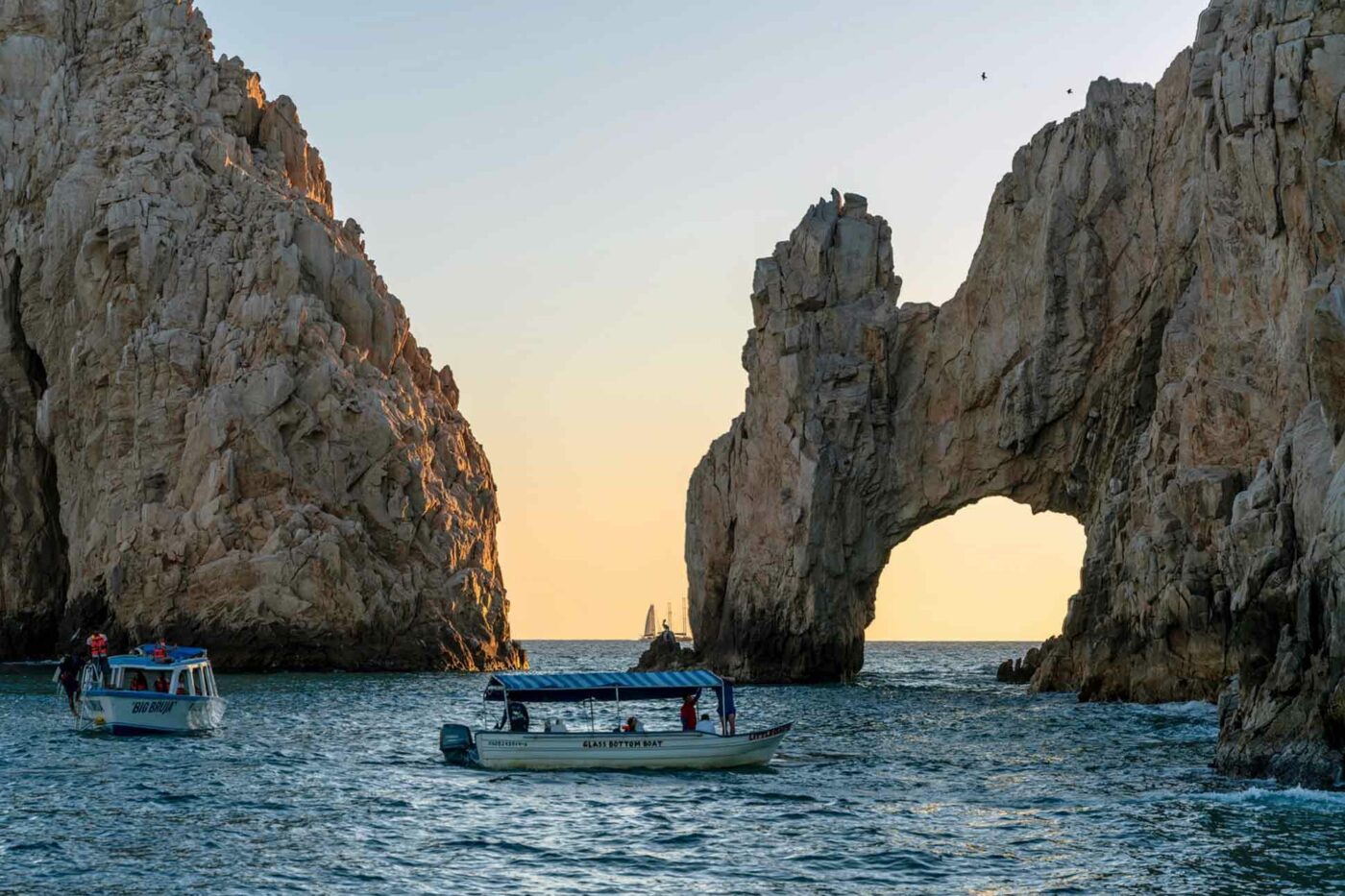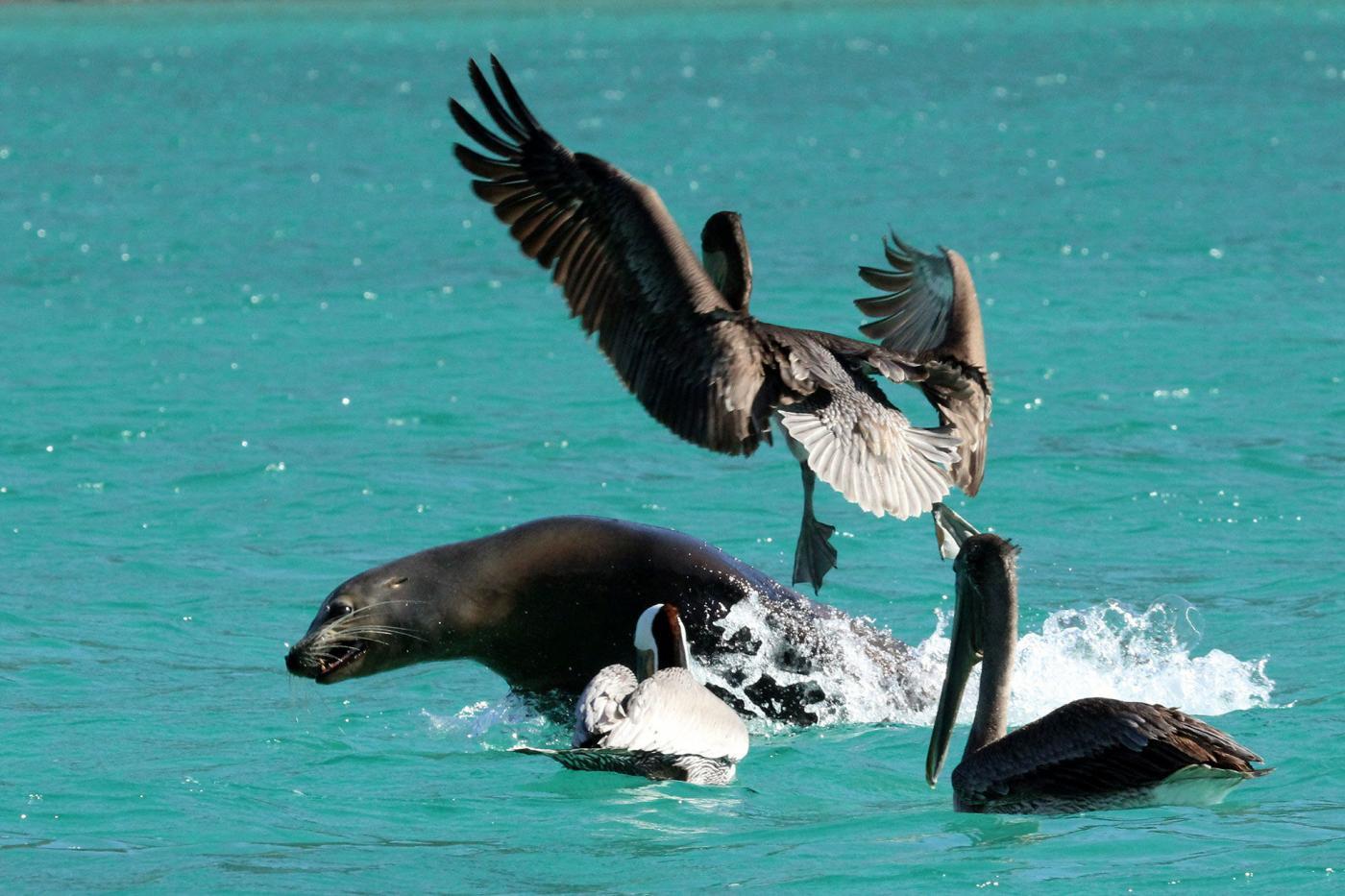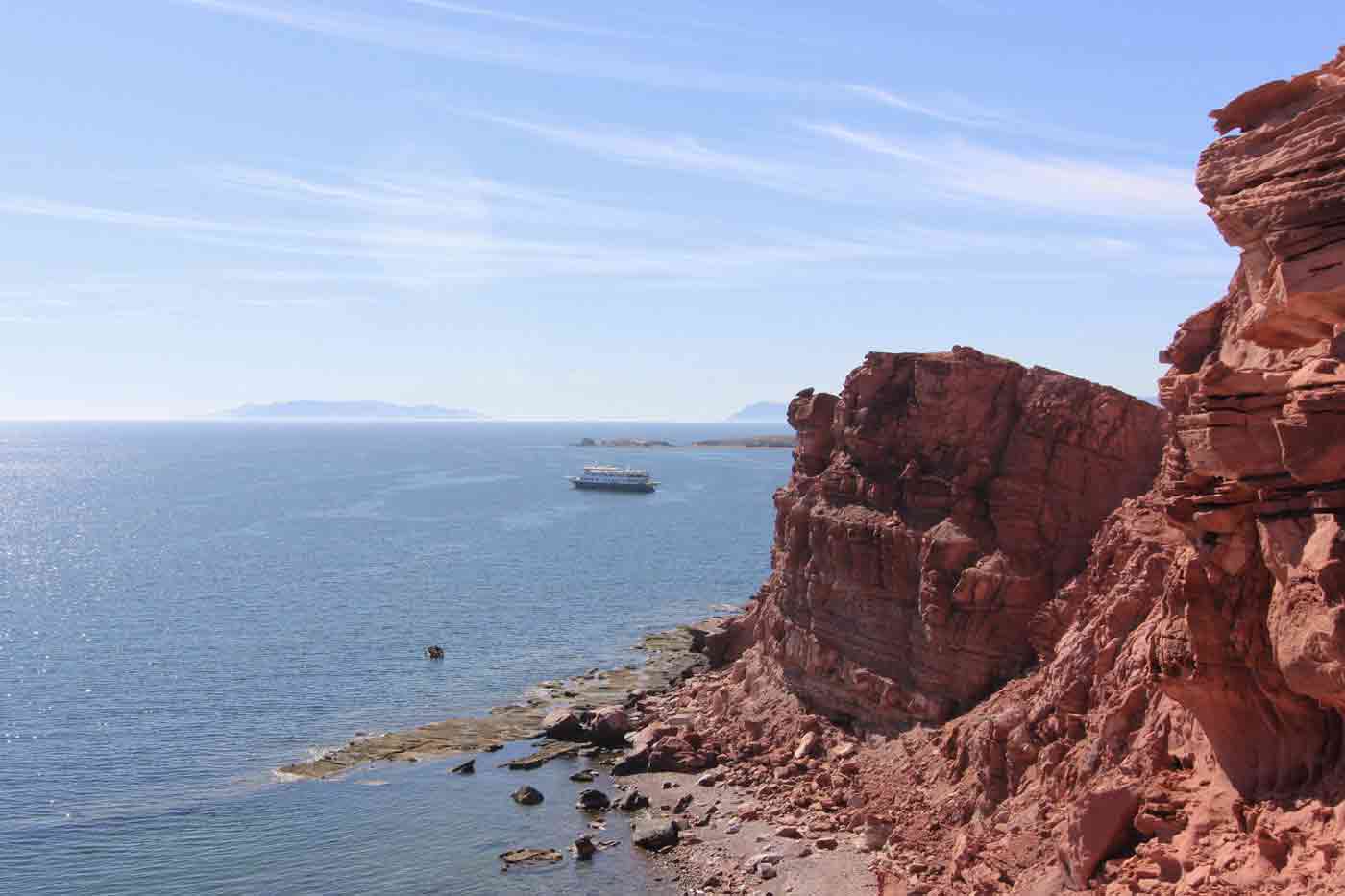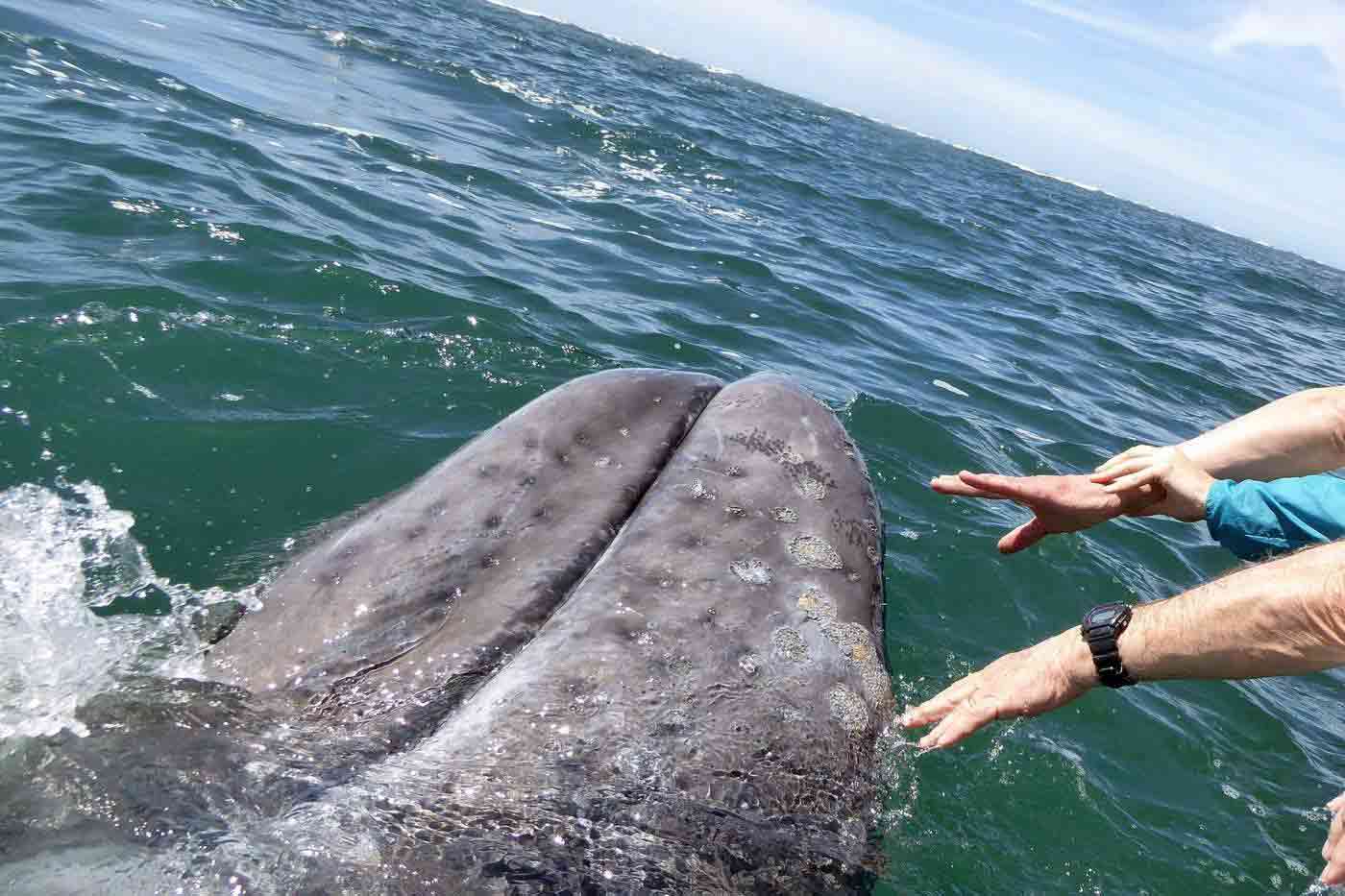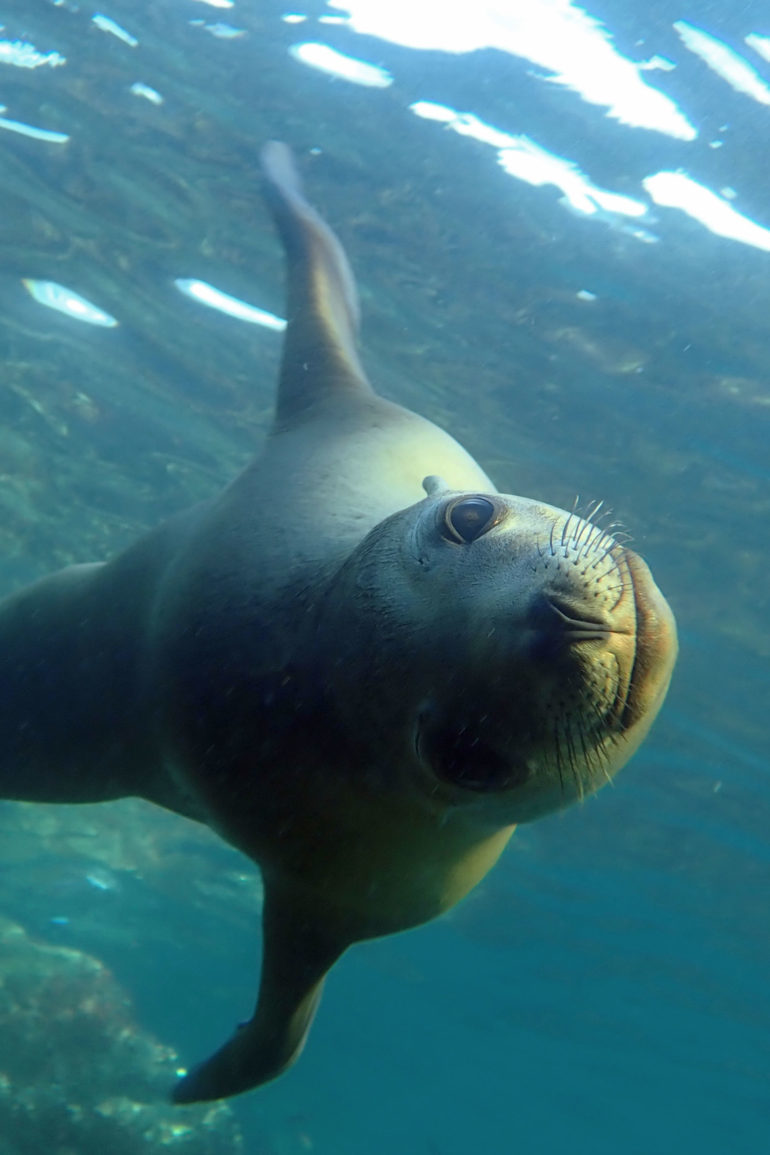I loathe to admit it, but it’s this very thing – or lack thereof – that I end up appreciating most. During the first few days of our journey, I find myself patting my pockets as habitually as an ex-smoker, jonesing to log on and research ‘pickleweed’ (an edible salt-tolerant succulent that grows in the flats on Isla San Francisco and tastes, unsurprisingly, like pickles) or ‘caracara’, ‘black jackrabbit’ or ‘mobula ray’. Or the history – measured in this case in millions of years – of the plate tectonics that birthed this peninsula into the Pacific Ocean and created the 700-plus miles of the Gulf of California. Or how it’s possible for Baja, which is geographically part of the Sonoran Desert, to be ocean, desert and volcanic rock all at once. But I don’t have WiFi, so I’ll have to settle for enjoying the real thing.
One day, deep enough into the voyage that I’ve stopped wearing garments with pockets, we go to see the grey whales. The day is long; we depart early in a convoy of mini-vans for Puerto Adolfo López Mateos, a fishing village that met the environmental impact of the industry with a creative solution. They fish there and offer sport-fishing tourism during the summers, while in the winters, when the grey whales make their 750-mile migration (the longest of any mammal) from the Arctic seas, they take visitors out in pangas to witness the feeding, breeding and frolicking of the mothers and newly born calves.
“We’ll pretend the boat is a clock,” says a different guide, Kelly, over the growl of the outboard motor. “When you spot the blow, call out the time.” Then, as though it was planned, a series of fountains erupts.
“Ten o’clock!”
“Three!”
“Thar she blows!”
“High noon!”
Our captain cuts the engine and we watch, captivated, as whale after whale – adults and calves – blow, emerge and glide past our boat.
“Grey whales are the only animals I know of that have gone extinct twice,” says Kelly.
Whaling in the mid-1800s accounted for the first time and, with nothing left to hunt, the whalers departed. The species rebounded in the 1920s – a surprise to everyone – and the whalers returned to do them for a second time. Happily, grey whales were officially protected in 1947 and, judging from my place at the ship’s prow, they’ve once again produced a healthy population.
The very next day I’m underwater, looking directly into the eyes of a sea-lion pup. It’s huge, with lashes luscious enough for Drag Race. Without looking away, the creature spins on its horizontal axis like a football. I swear it’s grinning at me and I laugh into my snorkel. Surfacing, I hear the unholy cacophony of the sea-lion bulls littered across the lava rocks of Isla Espíritu Santo. I blow the salt water from my snorkel and descend again into the happy sound of a billion bubbles bursting.
On our last evening at sea, we’re all gathered in the lounge to watch a slideshow of the activities of the previous week.
“Seven days!” exclaims Kim. “It feels like we boarded a lifetime ago.”
It sounds a little snarky, but I know what she means. It seems impossible to achieve any sort of meaningful reset in so little time, yet the restless urge to ‘check’ (my email, social media or if there are any emergencies back home) has indeed receded. Instead, I find myself in contemplation or else in conversation. What new geographic configurations are in our future, thanks to continental drift? Imagine what it would take to come back from extinction twice. For how much longer will there be places isolated enough to allow for the evolution of endemic species?
Outside, water flows around the Endeavour’s hull; a rope knocks gently, a metronome. She approaches our debarkation port at her own pace.
Keph Senett is a creative non-fiction writer, activist, soccer player, queer, traveller, human rights champion and connector of like-minded people. Her passions for travel and football have led her to play the beautiful game on four continents.
Photography courtesy of UnCruise Adventures and via Unsplash
Get out there
Do…
… get into the water. As impressive as Baja is above the waterline, there’s a whole other world in the deep, so slip into a wetsuit and channel your inner Jacques Cousteau.
… attend the on-board presentations (even if you do it using the radio in your cabin). The crew is highly knowledgeable and enthusiastic and can share information you won’t find elsewhere.
… stop and breathe. Juxtaposed against the brilliant blue waters of the sea, Baja’s landscape is almost lunar, making it an out-of-this-world setting for a mindful moment.
Don’t…
… forget to bring a few pesos for the stop at Agua Verde. While the men of the Romero family lead mule tours, the women make and sell hand-crafted jewellery from local materials.
… be afraid of adventurous eating in the dining room. The on-board chefs create dishes you literally won’t find anywhere else and the staff are happy to bring tasting portions.
… miss the nightlife. The Endeavour isn’t a party boat, but after-dark holds its own attractions, such as a spellbinding view of the Milky Way and bioluminescent algae glowing in the water.


